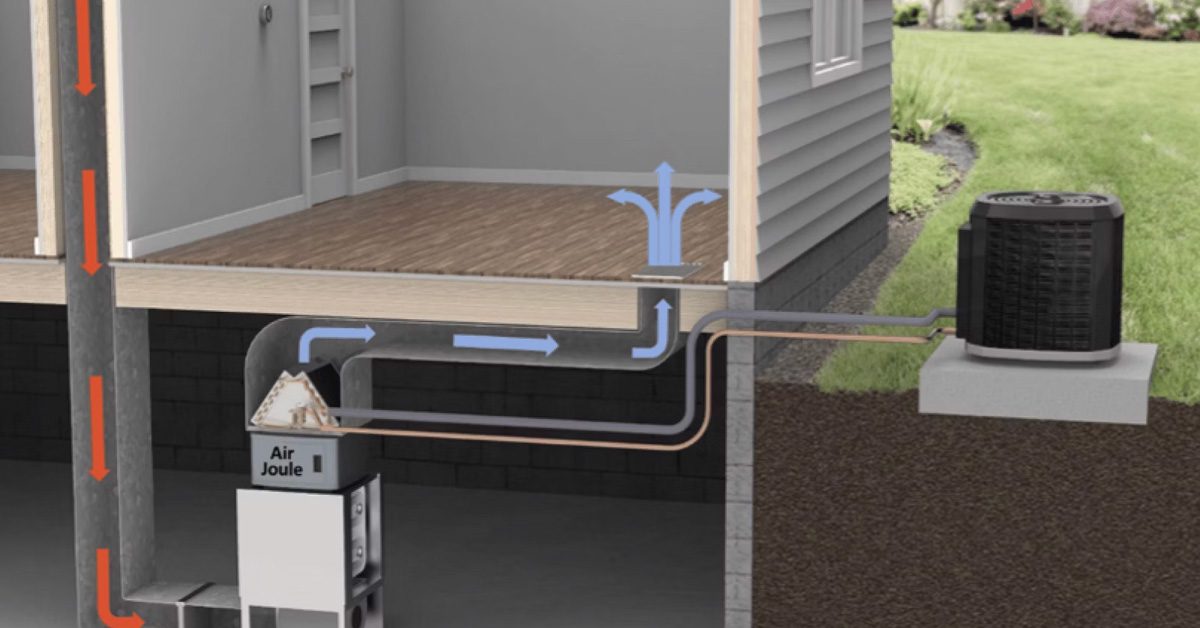Written By Susan Bauer, PNNL
It’s a dry heat! When you hear someone say that, they’re implying it’s easier to handle than heat combined with humidity. That’s certainly true of air conditioning (A/C) units. If the air is dry, they don’t have to work so hard and, therefore, don’t consume as much electricity.
A new technology is set to provide that drier air via a dehumidification system that uses 10 to 30 times less energy than standard dehumidifiers. The patent-pending system is also one-third the size and 40 percent lighter than conventional machines. These benefits make dehumidification practical and affordable for homes and buildings. And the technology can have a significant energy savings impact on vehicles as well.
The novel dehumidification system, developed by Pacific Northwest National Laboratory (PNNL), has been licensed to Montana Technologies, a development company with expertise and products that support electric vehicle energy management and advanced powertrains.
Montana Technologies estimates that the dehumidifier units will reduce dehumidification cost for buildings by nearly half. But the company plans to target vehicles first to help decarbonize the transportation sector.
“There’s a huge opportunity in electric vehicles (EVs) and particularly electric buses because integration of our dehumidifiers in their air conditioning systems can extend their driving ranges by up to 75 percent,” said Matt Jore, CEO of Montana Technologies. “Cooling humid air causes a huge power draw on an EV battery. In fact, air conditioning an electric bus stuck in congested traffic draws more power than propelling it down the road.”
Thermal balancing act
Air conditioners condense water vapor into liquid water as part of the cooling process—think of the water dripping out of the bottom of A/C systems. But that condensation process generates significant heat, forcing the A/C system to use 3–7 times as much energy to keep people in a building or vehicle cool.
PNNL’s new dehumidification technology eliminates condensation on the evaporators in traditional A/C systems. Montana Technologies calls the device AirJoule™, with Joule denoting a unit of energy. The name is apropos because the AirJoule dehumidification process “harvests” energy generated spontaneously from adsorbing the water vapor in the air. The system uses a twin-chamber design, in which both chambers contain a novel desiccant material that has exceptional adsorption properties. Each chamber takes turns either removing moisture from air or regenerating the desiccant for reuse.
In one chamber, outside air is passed over the paper-thin film of desiccant, pulling water vapor into the material’s nano-sized pores. The heat that is generated from adsorbing water vapor is then transferred to the other chamber to help release water previously captured in the pores. A light vacuum pressure helps regenerate the desiccant.
“Once the high-capacity desiccant is regenerated, the twin chambers reverse their functions and the cycle repeats, avoiding the need to add heat or cooling to the process,” said Pete McGrail, a Laboratory Fellow at PNNL who invented the system. “By balancing the heat transfer between chambers, we minimize energy consumption and allow the AirJoule system to continuously operate at ambient temperature, adding no extra load on an A/C unit.”

Small size, big demand
Because of its compact size, the AirJoule easily integrates with standard heating, ventilation, and air conditioning (HVAC) air handler units and ducting, making the AirJoule ideal for retrofitting existing HVAC installations and not just for new constructions.
HVAC is the largest single power demand in U.S. buildings, accounting for approximately 33% of total energy use, according to the U.S. Energy Information Administration.
“The global stock of air conditioners in buildings will grow by about 4 billion units by 2050, which amounts to 10 new air conditioners sold every second for the next 30 years,” said Jore. “When you combine these growing worldwide cooling needs with the global transportation A/C demands, the energy savings and reduction in greenhouse gases enabled by AirJoule are extraordinary. That is really what excites me about this technology. We definitely plan to make it available globally.”
COVID air exchange ups need for dehumidification
McGrail notes the need for an economical, practical dehumidification system may be on the rise, due to the COVID-19 pandemic. In the last few decades, buildings have become tighter and more insulated for efficiency. Now, building managers are being advised to increase outside ventilation to reduce viral loads. Bringing in more warm, humid outside air will greatly increase energy use by cooling systems. Removing humidity efficiently can offset the higher HVAC energy costs while still providing improved indoor air quality from increased ventilation.
Northern exposure benefits, too
“The maximum benefits are obviously in areas that have longer hot and humid seasons,” said PNNL commercialization manager Allan Tuan, who helped transfer this technology to Montana Technologies. “However, even in more temperate regions like Chicago and Detroit with shorter cooling seasons, hot summers cause spikes in utility bills and stress on the electric grid. The energy savings benefits of the AirJoule can help minimize those impacts.”
Montana Technologies is working closely with one of the world’s largest chemical companies to supply the nanoscale desiccant materials. They’ve also inked a deal with one of the world’s largest EV battery makers to accelerate deployment of AirJoule systems starting with all-electric buses in 2022.
